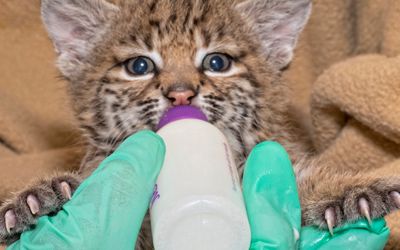Trick Perks of Hiring Professionals for Wildlife Removal Burlington
Trick Perks of Hiring Professionals for Wildlife Removal Burlington
Blog Article
Usual Challenges and Solutions in Urban Wild Animals Removal Initiatives
Urban environments present distinct obstacles for wild animals monitoring specialists entrusted with removing or managing wildlife populaces. These difficulties commonly converge with honest factors to consider, lawful frameworks, and the security of both pets and people. Public resistance and misconceptions further make complex these initiatives, demanding cutting-edge, non-lethal options and robust area outreach. Understanding the complexities associated with city wild animals removal is important for establishing techniques that balance human security with wild animals welfare. What techniques have proven most effective, and just how can neighborhoods be better engaged to support these efforts? This discourse looks for to reveal the elaborate balance needed for successful urban wild animals monitoring.
Honest Wild Animals Administration
Dealing with the intricacies of honest wild animals management needs an equilibrium between human passions and the preservation of wildlife ecosystems. In urban settings, this balance comes to be significantly tough as human growth encroaches on wildlife environments, leading to frequent human-animal communications. Honest wild animals management in these atmospheres needs techniques that focus on humane treatment of animals while mitigating possible conflicts.
One of the core concepts in moral wild animals management is the avoidance of injury. This entails utilizing non-lethal techniques for wild animals elimination, such as exclusion methods that stop animals from entering human homes, or using deterrents that lead them away from metropolitan locations. Wildlife specialists are tasked with utilizing approaches that reduce tension and injury to the animals, guaranteeing their well-being is considered alongside human safety.
Additionally, honest monitoring calls for educated decision-making based upon clinical study and eco-friendly understanding. It is necessary to evaluate the environmental duties of urban wildlife and how their removal could affect local biodiversity. Professionals need to likewise involve in public education, fostering a broader recognition of conjunction methods and highlighting the value of maintaining natural habitats. Inevitably, efficient ethical wild animals monitoring involves cooperation between preservationists, policymakers, and the general public to sustain urban communities.
Navigating Lawful Limitations
Navigating the legal landscape of city wildlife elimination provides an intricate layer to the already tough task of ethical wild animals management. Legal constraints are essential in guaranteeing that wild animals is treated humanely and environments are protected. These laws vary dramatically across areas, necessitating detailed understanding and compliance from those associated with wild animals monitoring. Regulations commonly define allowable techniques of elimination, safeguarded species, and licensure demands, thus forming the strategies utilized by specialists.
One major challenge is the constant advancement of these legislations, commonly driven by ecological adjustments and social perspectives towards wildlife conservation. Because of this, professionals must remain informed regarding present lawful requirements and upcoming legal changes. Non-compliance can result in substantial fines, lawful implications, and reputational damage.
Furthermore, collaboration with local authorities can be critical in navigating these constraints properly. Structure connections with wildlife firms and lawful experts can provide beneficial understandings and support. This partnership guarantees that elimination initiatives are not only lawful however also straighten with wider conservation objectives. Therefore, understanding and adhering to lawful frameworks is not just a procedural necessity yet an essential part of sustainable and liable urban wild animals management.

Safety in Removal Practices
Making certain safety and security in wildlife removal practices is paramount to shielding both animal and human welfare. A primary problem in wild animals removal is the possibility for injury or condition transmission to humans, necessitating the usage of personal safety devices (PPE) such as handwear covers, goggles, and masks.
Safe elimination practices likewise include the usage of humane traps designed to stop injury. These catches need to be consistently checked to guarantee that pets are not left in distress. Additionally, it is important to adhere to guidelines that determine the appropriate handling, transport, and release of caught wild animals, ensuring that the animals are returned to appropriate environments where they can prosper without posturing navigate to this site further dangers to urban atmospheres.
In addition, education and training for those involved in wildlife removal are crucial. This ensures that all celebrations understand the most recent safety protocols and methods, consequently lowering the likelihood of mishaps and promoting an unified conjunction between metropolitan occupants and wild animals.
Cutting-edge Deterrent Solutions
While safety and security in wild animals elimination is vital, preventing experiences with city wild animals via cutting-edge deterrent remedies can significantly reduce the need for such treatments. Urban environments, with their wealth of food and sanctuary, frequently bring in wild animals like squirrels, pigeons, and raccoons, leading to prospective disputes. Developments in innovation and design have led the way for efficient and imaginative deterrent techniques that reduce wildlife visibility without damage.
One such service is making use of ultrasonic tools, which release high-frequency noises inaudible to humans but undesirable for different wildlife species, driving them far from certain areas. In addition, motion-activated lawn sprinklers can deter animals by surprising them with abrupt ruptureds of water, properly inhibiting their return. These devices are especially valuable in protecting yards and environment-friendly spaces from foraging pets.

Additionally, the combination of wise illumination systems that adjust their brightness and shade can interrupt the nighttime activities of specific wildlife, reducing their comfort in city settings. Physical barriers, discover here such as bird spikes and nettings, continue to work as practical deterrents, preventing animals from nesting or roosting in unfavorable locations. Highlighting humane and environmentally friendly approaches, these technologies hold assurance for lasting urban wild animals management.
Area Education Initiatives
Recognizing the importance of area education and learning efforts is crucial in attending to metropolitan wildlife challenges properly. Such campaigns play a considerable function in promoting coexistence in between human beings and wildlife in metropolitan settings by raising understanding and promoting accountable actions. Informing homeowners about regional wildlife species, their habitats, and habits can decrease misconceptions and fear, resulting in even more enlightened choices concerning wild animals administration.
Area education initiatives usually include workshops, workshops, and outreach programs made to involve locals of every ages. These efforts can focus on sensible recommendations, such as safeguarding waste bins, setting up bird-friendly structures, and preventing feeding wild animals, which assists avoid attracting pets into city areas. By disseminating knowledge regarding the environmental click for more info functions of wild animals, areas can change perspectives from seeing pets as problems to recognizing their worth within metropolitan ecosystems.
In addition, education and learning initiatives can encourage neighborhoods to participate proactively in conservation initiatives. Residents that understand the value of wildlife conservation are most likely to sustain humane removal strategies and habitat defense measures. Efficient community education calls for collaboration in between neighborhood authorities, wildlife professionals, and community leaders to establish tailored programs that resolve details metropolitan wildlife issues. Such cooperation ensures that academic initiatives are both appropriate and impactful, promoting unified city environments.
Verdict
Urban wildlife elimination requires a complex method, addressing honest management, legal compliance, and security in removal methods. Successful metropolitan wildlife administration pivots on partnership amongst experts, authorities, and homeowners, guaranteeing approaches that protect human safety and security while respecting wildlife well-being.
Urban environments present special difficulties for wild animals administration professionals tasked with managing or eliminating wild animals populaces. Recognizing the intricacies involved in urban wild animals elimination is essential for establishing approaches that stabilize human safety with wildlife welfare.Browsing the lawful landscape of city wild animals removal presents a complicated layer to the currently tough job of moral wild animals management.While safety in wildlife removal is important, stopping experiences with urban wildlife via ingenious deterrent options can dramatically lower the demand for such treatments. Effective city wild animals monitoring pivots on partnership among specialists, citizens, and authorities, making certain approaches that secure human safety while respecting wild animals well-being.
Report this page